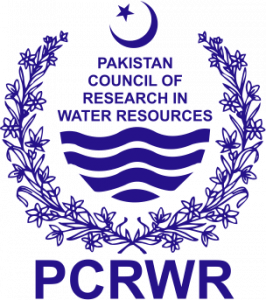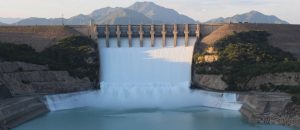Is it too late to cater to water crisis in Pakistan!
Pakistan Observer, July 19, 2022
Despite minimal contribution to causing Climate Change, Pakistan stands as one of the 10 most vulnerable countries in the world to the severe effects of climate change.
Receding glaciers, change in monsoon pattern, recurrence of droughts and floods, and rising temperatures. Recent heatwaves are one such manifestation of the situation.
The water crisis is another, more acute problem that climate change has brought to Pakistan which the country is barely equipped to resolve.
Although Climate Change has a big part to play, there are other rendering factors that exacerbate the existing situation such as mismanagement of water resources at agriculture, industrial and domestic levels, unchecked rapid population growth, water pollution and inefficient infrastructure to name a few.
Climate change and population growth, however, are making a lethal combination in worsening the situation.
A recent report by the International Monetary Fund (IMF) states that Pakistan ranks third in the world among the countries that face acute water shortage.
Pakistan Council of Research in Water Resources (PCRWR) reported that Pakistan touched the “water stress line” in 1990 and crossed the threshold of “water scarcity” in 2005.
Consequently, around 80 percent of the population faces severe water scarcity for at least one month of the year.
A recent study suggests that by 2016, the availability of surface water at the per-capita level had reduced to 1000 cubic centimeters that continued to decrease since then.
Water usage in the country is another significant contributor to worsening the crisis situation.
It ranks the fourth highest in the world. The agricultural sector accounts for 94% of annual water withdrawals, out of which, 80% is used over four major crops (wheat, rice, cotton, and sugarcane) which adds only 5% to GDP.
The irrigation system of the country is one of the most inefficient in the world which marks only 39% of efficiency.
It shows the outdated and poor maintenance of the irrigation system. Due to these outdated methods of irrigation, around 40-50% of the water supply is simply wasted through canals and pipes.
As the canal water is not priced, and agriculture is largely untaxed, the government cannot collect enough to modernize the sector.
The recovering amount hardly covers a quarter of annual operating and maintenance costs.
Another cause of the crisis is the lack of water storage capacity in the country.
Pakistan receives around 145 million acre feet of water every year, out of which it has the capacity of storing only 13.7 million acre feet.
The rest is used and eventually wasted due to the few dams. The expected population of the country could cross 260 million in 2050.
With that, there is a dire need to formulate effective policies to address the distribution of water to agribusiness, industry and domestic use.
Experts suggest that the water crisis in Pakistan is not due to the availability of water, but the mismanagement of water resources.
Dr Ishrat Hussian, former Governor of the State Bank of Pakistan says, “We do not have a water crisis; we have a failure of governance with regard to water issues”.
It is a silver line for the country’s exacerbating water crisis. A well-informed and multifaceted policy will well address the situation.
The first step in this regard is to launch effective awareness programs which can educate the public about the crisis so that they take pertinent precautions to save water as much as they can.
Elderly education is crucial because most of the farmers cannot read and thus don’t know the severity of the situation.
There is a crucial need to modernize the irrigation system of the country. Smart methods of irrigation such as drip irrigation, sprinkle irrigation, surface irrigation, and subsurface irrigation should be implemented to reduce water wastage.
A significant amount of work is needed for water recycling which is negligible in the country.
A lot of countries around the world reuse 50-90% of their wastewater by recycling it. Relevant ministries should work on implementing national environmental quality standards.
They should provide subsidies and tax incentives to the industrial sector against the installation of wastewater treatment plants.
It is the time to embrace the concept of South Asian regional food sufficiency instead of self-sufficiency as far as growing water-intensive crops are concerned.
It takes around 1000 tons of water to grow a ton of wheat while 2000 tons of water to grow a ton of rice.
This water can sufficiently be used in other important areas. For sugarcane, Pakistan can import it from countries like Cuba at half the cost of producing it.
Extensive work is required in constructing small, medium and large dams to extend the water storage capacity.
 Other methods should be studied and implemented to trap rainwater and utilize it to recharge underground aquifers.
Other methods should be studied and implemented to trap rainwater and utilize it to recharge underground aquifers.
Equitable water distribution requires apposite policies too. To address inter-provincial tussle for water, authorities should raise positive awareness among people and work on agro-zoning instead of provincial boundaries for distribution of water resources.
As different sectors require different quantity of water, it should be provided on the basis of crop, rather than land.
It is high time for the government to prioritize the dealing of water crisis on an emergency basis.
Experts should be given the responsibility to deal with the matter with best of their abilities and available resources.
The little time we have, should be utilized in making pertinent strategies to resolve the issue.
Otherwise, the crisis could reach beyond controlling, adding yet another national emergency to already challenging times for the country.







